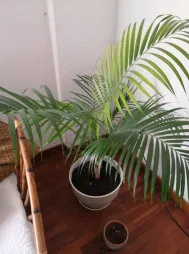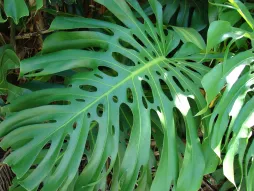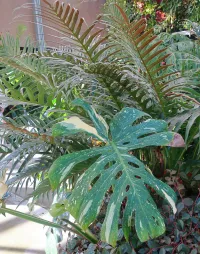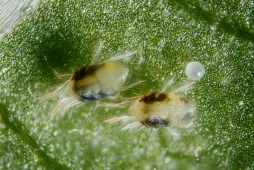Howea belmoreana, a palm with very arching leaves
Howea belmoreana is not a palm like any other. While its congeners like to grow on dreamy beaches, it prefers low-altitude forests. This species, native to the Australian island of Lord Howe, belongs to the Arecaceae family.
How to recognize Howea belmoreana?
Howea belmoreana is an upright palm. It reaches a height of ten meters on its native island. Indoors and in pots, it is content with a height of 2.5 meters and a spread of 1.8 meters. This is a slow-growing plant. It takes between 20 and 50 years to reach its full size.
Howea belmoreana has a single stipe. It measures fifteen centimetres in diameter at maturity. In older specimens, the green false trunk bears gray leaf scars.
The green palms are more arched than those of kentia. Very fine and pinnate, they resemble feathers. They are attached to the stipe by a thin petiole. Each leaf is 45 cm long and 30 cm wide.
Howea belmoreana is grown mainly for its foliage. Its brown flowers rarely bloom outside its natural environment.
The seeds are contained in dark-red ovoid fruits. But curly kentia almost never produces them indoors.
This palm is non-toxic. You can safely share it with your pets.
Our maintenance tips
Kentia curly is an easy-care plant. But it is fragile. Grow it away from draughts, cold and direct sunlight.
Watering
To know if you need to water, touch the soil. Water only when the surface of the substrate is dry (two to three centimeters). Use non-calcareous water, such as rainwater, at room temperature.
To prevent the roots from suffocating, don't leave standing water in the saucer or planter.
To prevent the roots from suffocating, don't leave standing water in the saucer or planter.
Spray
Fogging helps to increase humidity and prevent pest invasion. Spray the foliage with fresh water, such as rainwater. Avoid tap water. Too hard, it leaves white marks on the leaves.
Repotting
Every spring, repot your Howea belmoreana to give it more space.
Water your plant the day before repotting. The operation is easier when the rootball is still damp.
Curly Kentia develop their roots deep down. To give them room to grow, choose a pot with holes higher than it is wide. Line the bottom with a bed of gravel or clay balls. This facilitates drainage.
Then pour in a layer of potting soil for green plants. Plant kentia curly and add substrate. Don't fill the pot to the brim. Stop three to five centimetres beforehand so that the water doesn't overflow during watering.
Fertilization
To promote the growth of your Howea belmoreana, apply fertilizer in spring and summer.
Supplement watering with a houseplant fertilizer to promote the development of your Howea belmoreana.
If you have just repotted, wait six to eight weeks before starting to fertilize.
Cleaning
Dust on the leaves slows down photosynthesis and hinders your plant's growth. Clean foliage with a clean, damp sponge. This operation also helps prevent invasions by mites and other pests.
Prune
Remove dry palms by cutting them off at the base. Use clean pruning shears to prevent the spread of disease.
Diseases / Threats
Information
| Family | Araceae - Araceae |
| Type | Howea - Howea |
| Species | Kentia curly - Howea belmoreana |
| Lifecycle | Perennial |
| Foliage | Evergreen |
| Exposures | |
| Substrat | |
| Planting methods |
In pots In tubs |
| Categories | |
| Tags |
Beginner Fritillary Large pot Soiffarde |
| Origin |
Australia |
| Hardiness (USDA) | 10a |
| Leaf color |
|
| Flower colors |
|
| Fruit color |
|
Discover plants from the same family

Kentia
Discover

Monstera deliciosa
Discover

Monstera variegata
Discover

Monstera 'Thai Constellation
Discover


















